Weaving caskets from newspaper tubes
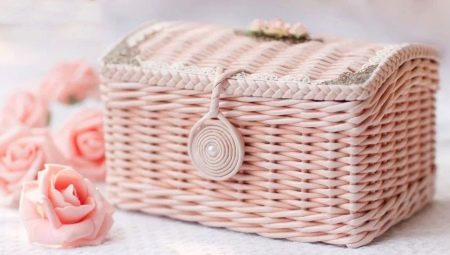
Weaving baskets, caskets, souvenir boxes from newspaper tubes is a popular type of needlework among creative craftswomen. This activity is in line with the current environmental trend. When weaving crafts from newspaper tubes, paper is given a second life.
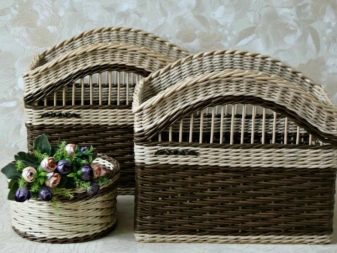
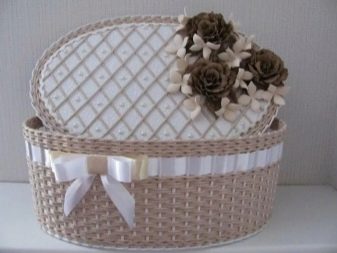
What is required?
The advantage is that making caskets from newspaper tubes is less expensive compared to other types of handicrafts. Raw materials for work are available and cheap. You need to prepare the following tools and materials:
- many tubes from newspapers;
- scissors or knife for cutting paper;
- a long thin wooden stick or knitting needle;
- PVA glue, "Moment" or silicone;
- color stain;
- paint for dyeing paper;
- form for the box;
- bottom and lid blanks made of cardboard, wood or plastic;
- finishing varnish.
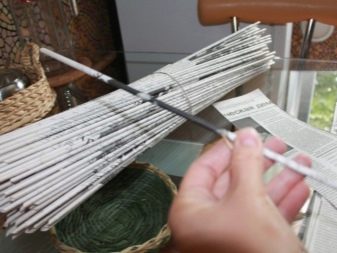

The first stage in the work is the preparation of the tubes. Depending on the size of the created box, prepare 200-400 tubes from the newspaper. To make a straw, cut a standard unfolded sheet of newspaper across the font into 4 parts. You will get 4 strips about 10 cm wide. To twist the tube, put a stick or knitting needle on the corner of a piece of paper at 30-45 °.
You need to twist, pressing the paper tightly against the stick so that the tube does not turn out to be loose. Glue the corner, remove the stick. The tube is ready.
Color the blank in accordance with the chosen design of the box. Some craftswomen weave a one-color box using blanks of the same color. You can decorate the product with strips of tubes of a contrasting color.A cheerful multi-colored box will turn out from unpainted tubes, twisted from strips of colored newspaper. Various methods are used for staining.
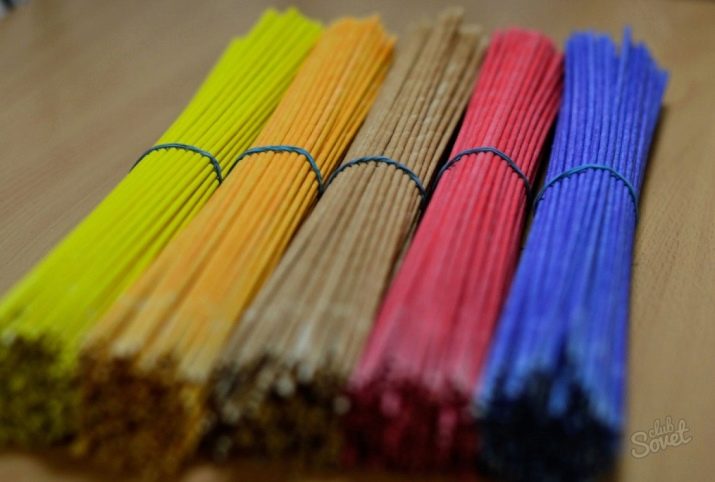
You will need the following materials:
- colored stain;
- color scheme from a hardware store;
- white wood impregnation;
- acrylic enamel, water-based primer;
- acrylic paint;
- wide tassel.


Water-based products are used. When stained with stain, the font on the tubes is not stained. Therefore, first you need to prime them so that they become white. Composition for processing tubes: 100 ml of water + 100 ml of acrylic primer + 2 tbsp. l. acrylic varnish + 2 tbsp. l. acrylic enamel. Process the workpieces with this mixture with a brush. It turns out to be a perfect white color, the letters are completely painted over. If you need a different color, you can additionally cover it with colored acrylic paint on top.
When staining with a stain, the following mixture is prepared: the stain is diluted with water to the desired consistency and mixed with the varnish. For 0.5 liters of stain add 1 tablespoon of acrylic varnish.
This solution fixes the dye and gives elasticity to the tubes. Also, for processing blanks, a color scheme from a hardware store or white wood impregnation is used. After staining, the tubes can be dried with a hairdryer. But they should remain slightly damp, which is convenient when weaving.
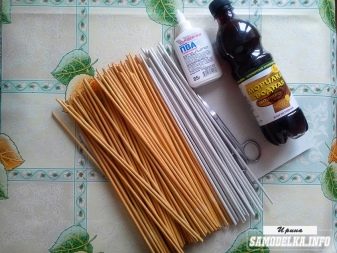
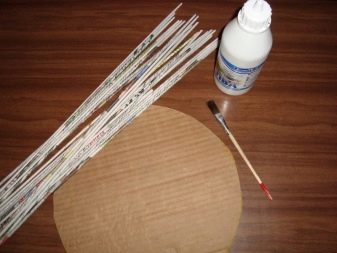
How to weave?
Weaving a box with your own hands from newspaper tubes is an exciting activity, but it requires certain skills.
First, you need to decide on the shape of the product from the newspaper, choose an object of the desired shape for the template. If the box is round, then a round saucepan or teapot will serve as the shape.
It will stand in the center of the piece while weaving and keep it in shape. If a square or rectangular box is woven, a box of the same shape is selected.
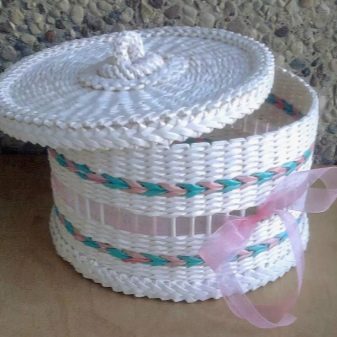
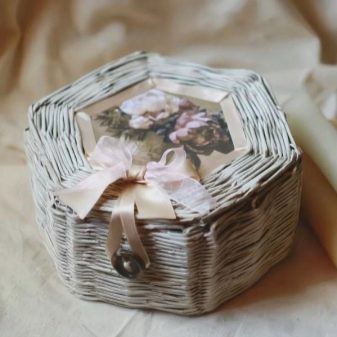
Crafts for beginners step by step
An important detail in weaving - the tubes for the stands need to be dry, and the working tubes need to be moistened so that they become elastic. For novice craftswomen, a master class of weaving caskets with and without a lid will be useful step by step.
- The bottom for the product can be woven. But it is easier to make from hard cardboard, plastic or wood. In handicraft stores, ready-made bottoms with perforations are sold. The holes in the bottom are located at a distance of 1.5-2 cm.
- Take a tube, bend it in half and insert the ends into 2 holes of the bottom. All holes are filled in this way. These tubes will be the uprights around which weaving is done.
- Fold the next tube in half and put it on the counter at the bottom, while folding it with a cross. The stand will be wrapped around the working tube.
- Start weaving in the simplest way "rope". The upper part of the working tube is wound behind the next post from the inside, and the lower part wraps around the post from the front side.
- When the tube ends, it is built up - the next tube is inserted with a sharp end into the previous one and lengthens the workpiece.
- The "string" method is usually used to knit the lower part of the box, 4 rows. This will be the edge of the bottom. At this stage of weaving, a mold blank (pot, kettle, etc.) is inserted into the product to support the product.
- The middle section can be woven with a more complex pattern using numerous weaving patterns. These are patterns "chintz", "vintage", "cross", checkerboard pattern and many others.
- For beauty, the products change the color of the tubes, then the box will turn out with a pattern.
- If you add another tube to the work and weave it with three, winding them for every third rack, you get a different pattern.
- The final stage is the bending of the racks in the upper part of the product. First bend the uprights outward. To do this, we start each rack for the next one and lower it down. Then bend them inward through the holes, fix them there and cut off the excess. The cut ends of the racks or working tubes are glued inside with glue and fixed with a clothespin.
- To broach working tubes, craftswomen use a crochet hook if the weaving is tight and the racks are close to each other.
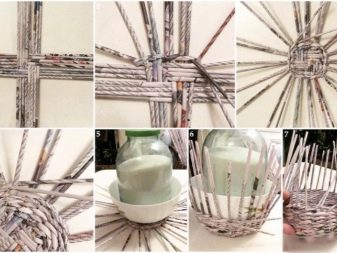
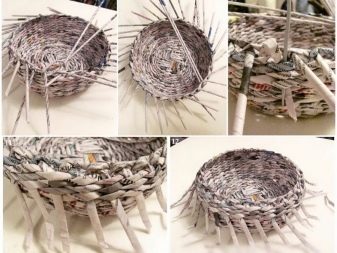
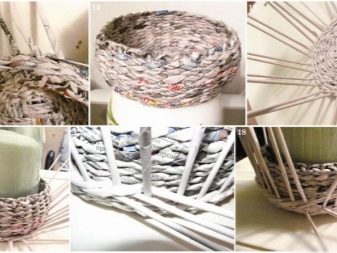

Weave with cover
If the product has a lid, it must be done in the same way as the bottom. But the racks are made first horizontal, without lifting them up. First, weave flat rows around the lid blank with a string. When the desired diameter of the lid is reached, the working tubes are cut and glued. Then make a fold. This is the rim of the lid. To do this, you need to raise the racks - hook each one to the adjacent rack and raise. So all the racks rise in turn. Connect the working tubes and weave the bend with the "string".
Lids with an inner rim are convenient when the lid does not clasp the product from above, but is fastened inside. To create a side, the lid is not weaved to the required diameter, but the number of racks is doubled.
Turn inside out towards you and bring every second rack up. Braid the cover from the remaining horizontal posts to the desired size and cut them off. Weave the inner side from horizontal racks, adding 2 working tubes. Weave 3-4 rows - and the side is ready. Cut and secure the excess tubes, bend the side uprights.
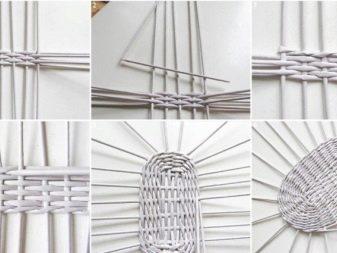
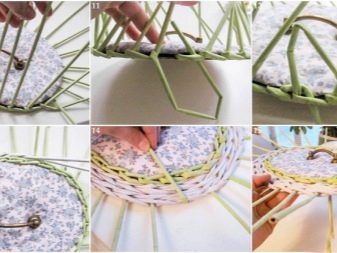
When the craft is ready, it is varnished for strength. Decorate the lid using decoupage or scrapbooking techniques. Decorate the bottom with an additional piece covered with fabric. The decoration of the box depends on the creative imagination of the craftswoman. The bottom of rectangular or square boxes is woven using a special weaving machine. The technique of "chintz" weaving with one working tube is suitable for this.
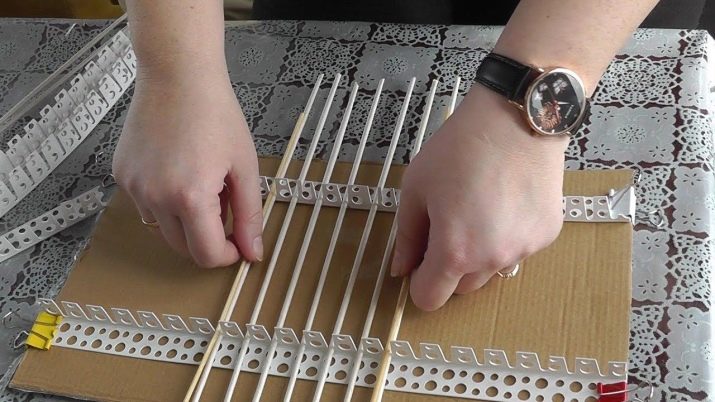
Beautiful examples
Wickerwork not only decorates the interior, but also performs practical functions. Laundry is stored in large baskets and boxes. Small spices can be stored. The book box is convenient for storing documents or jewelry.
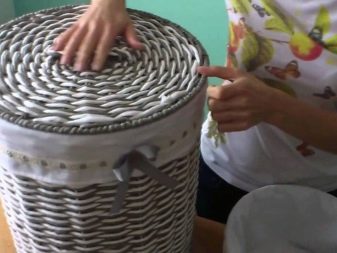
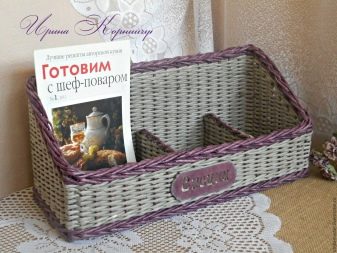
The quality and beauty of the craft depends on the experience and skills of the craftswoman. Large wicker baskets are handy for storing balls of yarn. For storing sewing accessories, wicker boxes with an additional element inside are suitable. This is a flat blank with sticks on which spools of thread are strung.
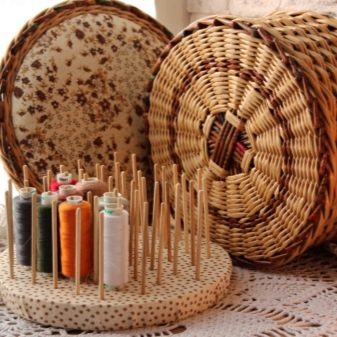
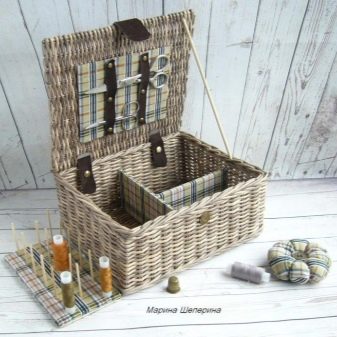
Wicker products in the form of original souvenirs of various shapes are good. It will not be difficult for skilled hands to weave a box in the shape of an apple, melon, or a mushroom.

Heart-shaped boxes are popular. The bottom for this box is cut in the shape of a heart from hard cardboard or plywood. Additionally, they make an ornament for him to close the ends of the glued posts. Weave in any pattern upward, observing the shape of the heart as much as possible. The lid for this box is made in the same way as the bottom. The workpiece is braided in one of the ways. It is advisable to decorate a box in the shape of a heart with flowers, ribbons, beads and much more, for which the imagination of the craftswoman is enough.
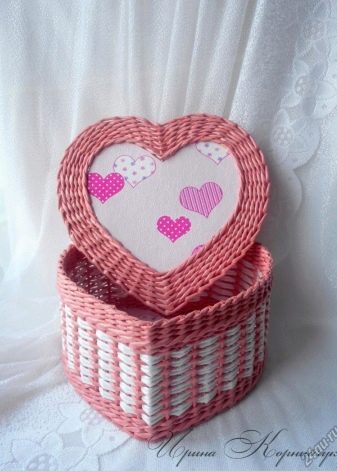

How to weave a box with your own hands, see the video.








